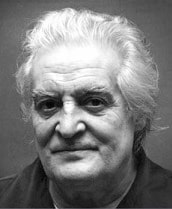M. Viola
In 1936 he was part of the ADLAN group (Friends of New Arts) in Barcelona and in May of the same year he wrote, together with the art critic Magí Albert Cassanyes, the manifesto of the Logicophobist Exhibition. Viola related the exhibition to surrealism, and pointed out that this The movement was a kind of subset of logicofobism. In his opinion, poetry was the portal that would lead artists to a new form of knowledge.
The year 1958 marks the beginning of his personal style, at the same time that he is integrated into the avant-garde pictorial group El Paso that was made up of, among others, the painter Antonio Saura and the sculptor Pablo Serrano, both from Aragonese. He begins to develop an abstract painting of an expressionist nature and great concern for color. Until then he prevailed in his work the figurative references and the allusion to the landscape, as shown in his work Pelea de gallos.
However, since his ascription to the El Paso group in the late 1950s, his painting operates from energetic visual forms generated from a central mass. He works fundamentally the chromatic and light aspects from the abstract geometrization and without neglecting the work on the textures and a vague cosmic character. His palette and manners are reminiscent, in any case, of Spanish Baroque painting, the great cultural and artistic reference for his paintings.
In the first years of his change in style in 1958, his painting dispenses with color, and works basically from black and white, with a wide intermediate range of grays and some great effect earth. Later he will evolve towards a much wider range where warm colors and contrast with brushstrokes of green and blue tones dominate. Among the anthological samples of him, it is worth highlighting the one offered in Madrid by the Museum of Contemporary Art.
He died after suffering from lung cancer for a long time on March 8, 1987 in El Escorial, where he had resided since 1961. He was buried in the cemetery of this town.
His work can be found, among others, in the Reina Sofía Museum in Madrid, the Museum of Abstract Art in Cuenca, the Museum of Contemporary Art in Elche, the Guggenheim in New York, the Museum of Modern Art in Lieja or the National Museum of Buenos Aires.

